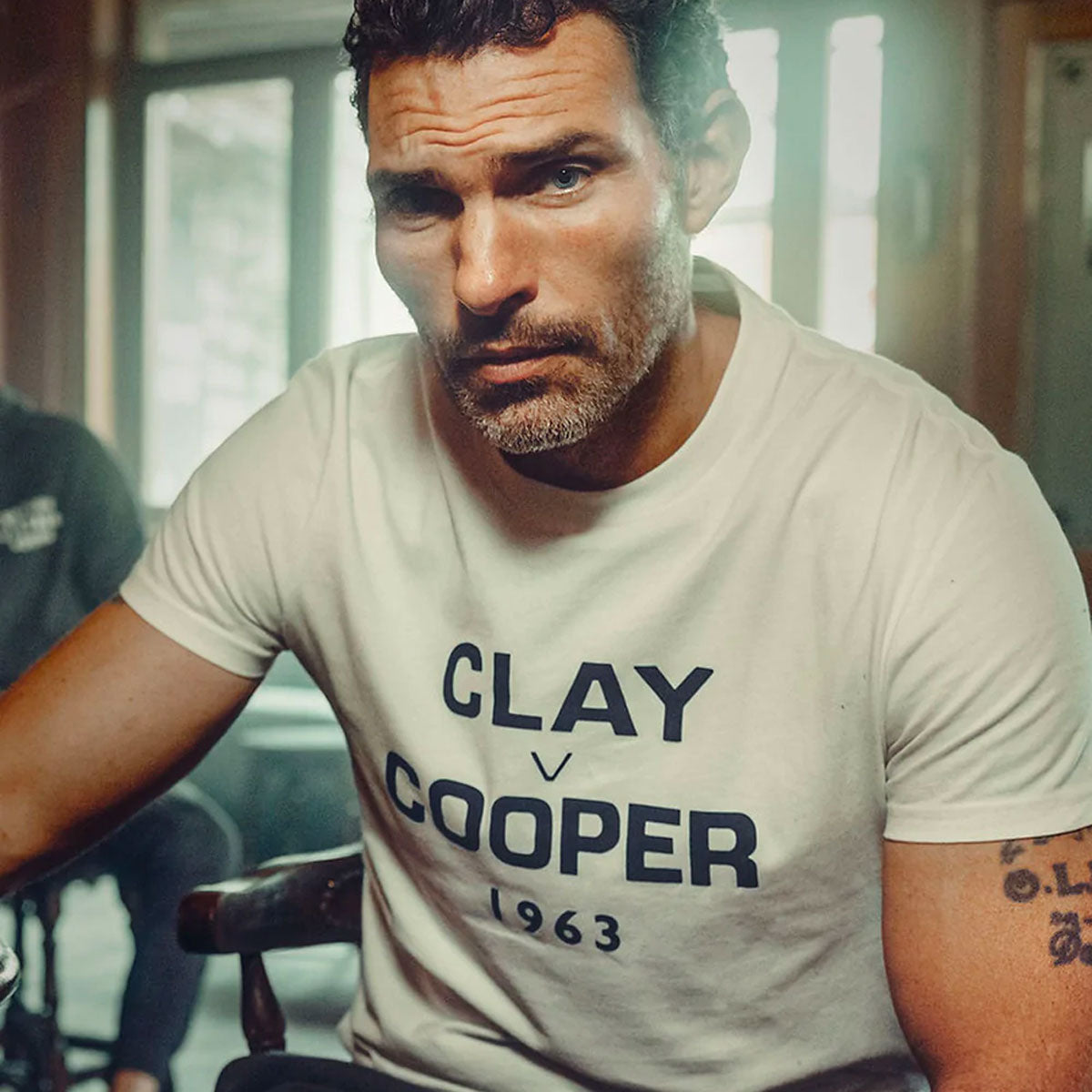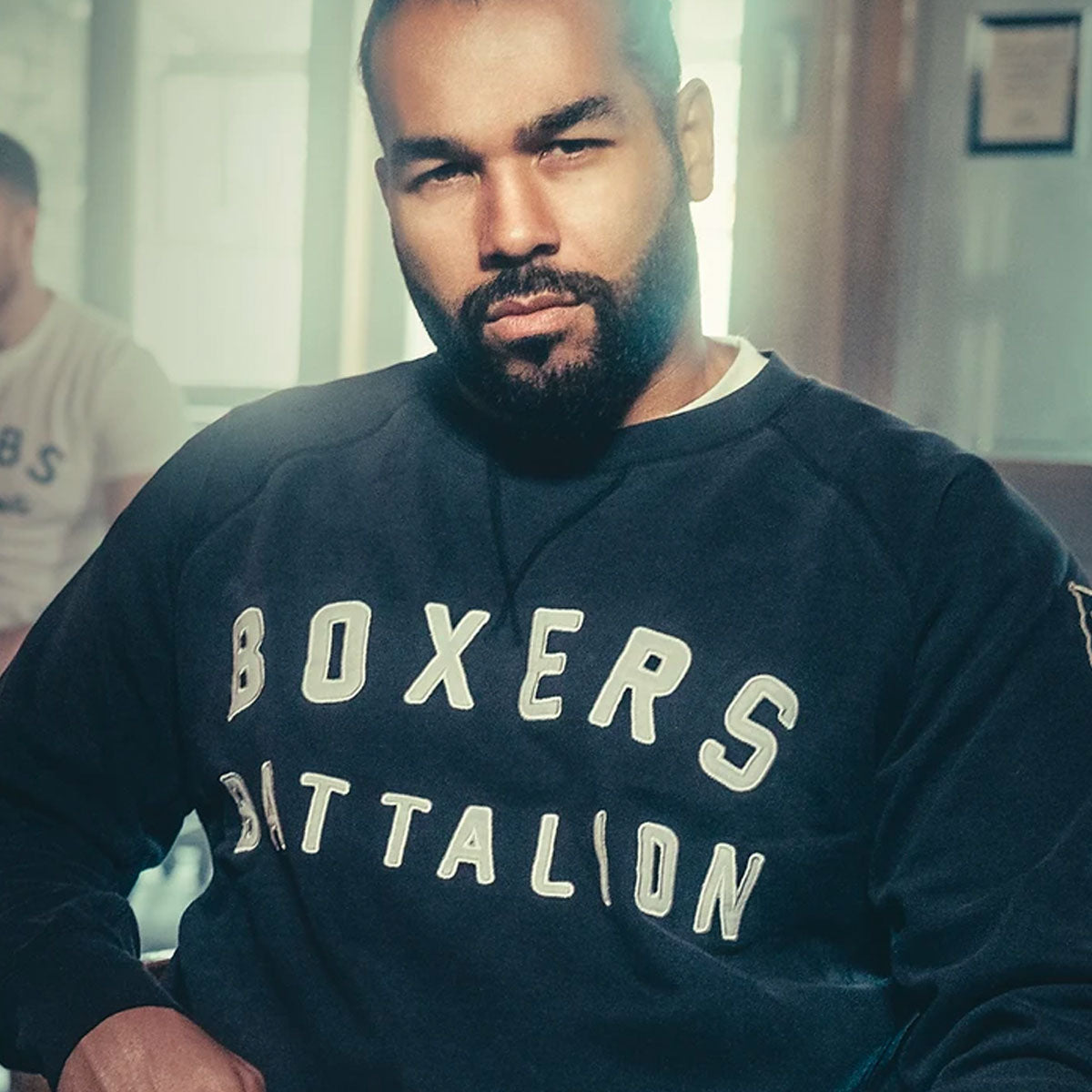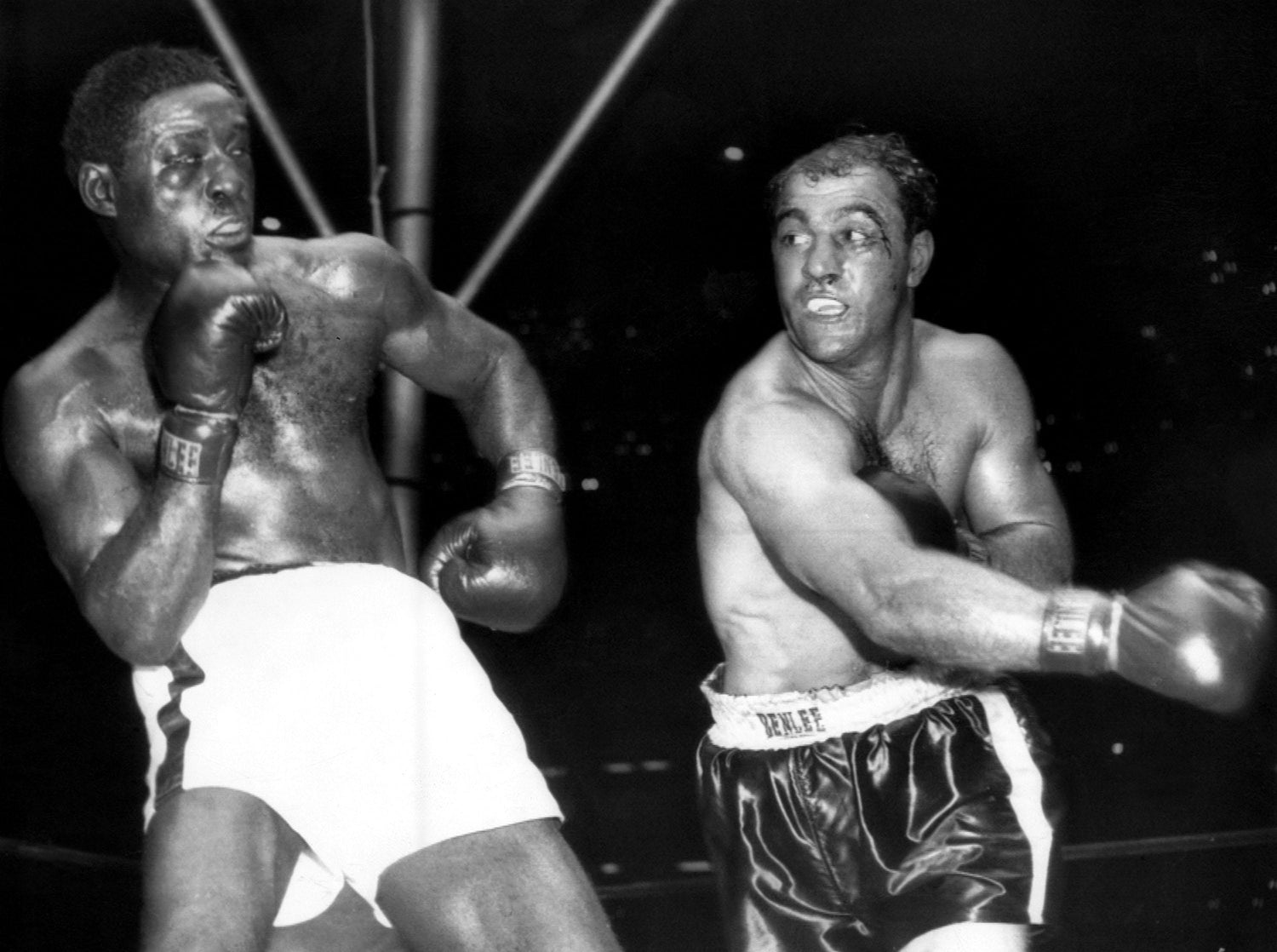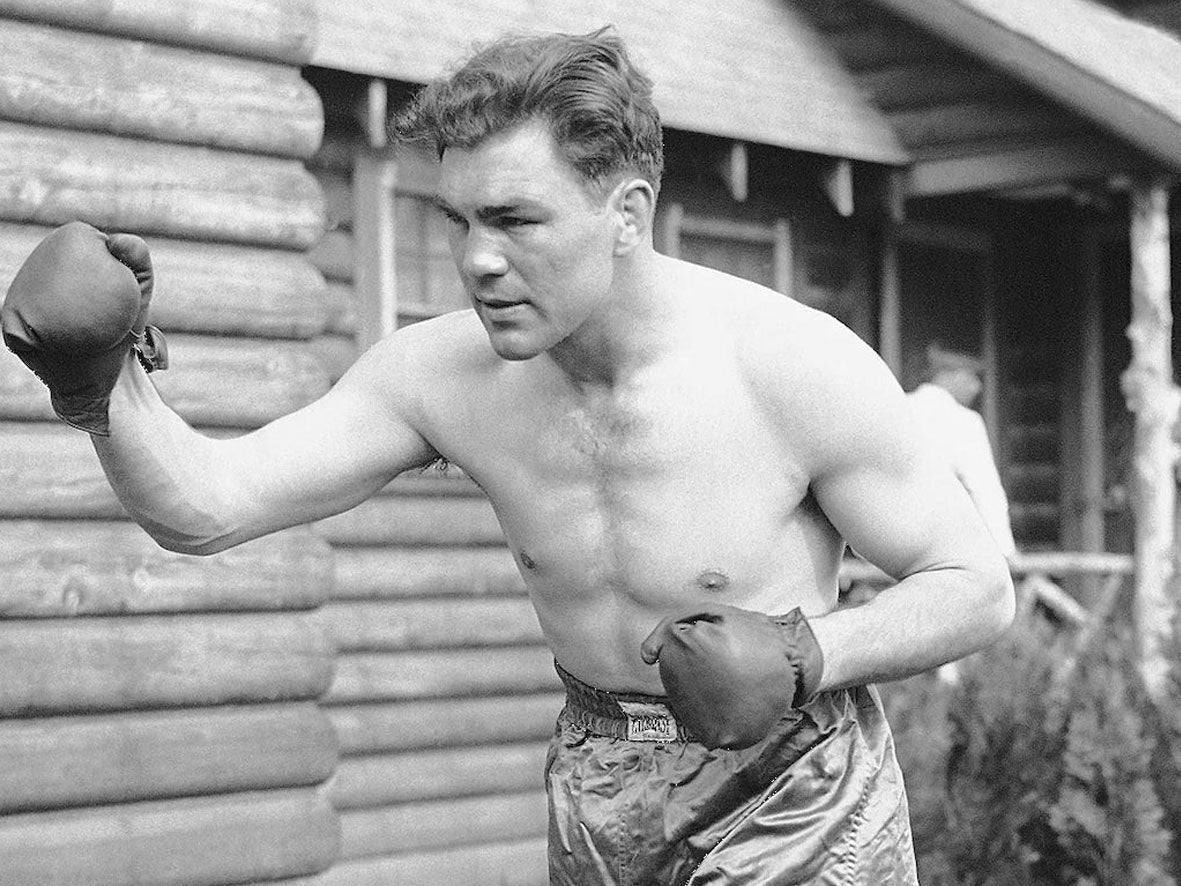Roland La Starza was tough, but Ezzard Charles was the toughest man I ever fought. I learned what pain was all about when I fought him.’Rocky Marciano
Ezzard Charles was born on 7 July 1921 in Lawrenceville, Georgia. He grew up in extreme poverty and at the age of nine moved to Cincinnati to live with his grandmother.
Bullied as a child, young Ezzard began boxing as an amateur in his mid-teens, starting his journey as a featherweight. Although he only fought around 40 contests, he amassed an impressive list of accolades in just over three years. In March 1936, 14-year-old Charles became the Northern Kentucky amateur boxing lightweight Champion. The year after he gained welterweight championship status for the Diamond Belt, Greater Cincinnati junior novice title and Ohio Amateur Athletics Union (AAU) district titles.
1938 saw Charles retain his Diamond Belt and AAU welterweight titles, in addition to becoming the Cincinnati Golden Gloves welterweight champion. Moving into his final year as an amateur, Charles, now a fully-fledged middleweight, won the Diamond Belt title, the Cincinnati Golden Gloves, the Ohio AAU championships, the Chicago Golden Gloves Tournament of Champions and the national AAU championships. The latter two titles were succeeded by incoming champion, Joey Maxim, who Charles would share the ring with as a professional.
With an impressive amateur resume behind him, the Cincinnati Cobra turned professional on 12 March 1940 aged 18, stopping fellow debutant, Melody Johnson in the fourth round. The Middleton Journal wrote, ‘Ezzard Charles, middleweight from Cincinnati, made his first professional start against Melody Johnson, also of Cincinnati, and lived up to his advance billing as a finalist in the 1939 Golden Gloves when he smacked Johnson with a deadly right in the fourth canto and put him down for the count. It was Charles' fight all the way, as he had Johnson on the floor in the second and hanging on the ropes when the bell sounded at the close of the third canto.’
On 27 October 1942, Charles (now 28-2-1) took on Joey Maxim at Duquesne Gardens, Pittsburgh, giving away an inch in height and 16lbs in weight to the Cleveland born future Hall of Famer. Despite being the smaller man, Charles comfortably beat Maxim over 10 rounds, then repeated the feat five weeks later.
Between 1943 to January 1946, Charles only fought four times due to active service in the U.S. Army, playing his part in the Second World War. The four fights proved to be a mixed bag of events. After losing to Jimmy Bivins on 7 January 1943 by unanimous decision, Charles was stopped in the eighth round two months later by Lloyd Marshall in front of almost 11,000 spectators at the Arena, Cleveland. His handlers claimed their charge had fought with a hip injury, which perhaps explained why he hit the canvas eight times. His next two fights, were competing in the ‘Second Inter-Allied Championships’ as a light heavyweight and were 21 months later in December 1944, at the Brancaccio Theatre, Rome, Italy. Both contests were within three days of each other and Charles, predictably won the tournament.

From 1944-51 Charles only lost once in 42 outings and in the first 17 fights of that stretch he also fought Archie Moore twice. In the wild, the mongoose usually prevails over the cobra, but in the boxing ring, this particular Cobra was too slick, precise and defensively impregnable, as he won both encounters on points, albeit, the second fight was a close call, which inevitably signalled the rubber match down the line. His only loss in that run of 42 fights was against Elmer Ray on 25 July 1947 and that was debatable. The Ring wrote, ‘Charles apparently won handily. . . Ray was the aggressor most of the way, but Charles was the faster, the better boxer, and the sharper hitter.’ Charles fought a further six times in 1967, winning all his bouts, including a sweet second round avengement over Lloyd Marshall, knocking the Cleveland slugger out in two rounds. He was also voted The Ring’s No.1 light heavyweight contender for 1947 and the fact that he was never given the opportunity to fight for the world light heavyweight champion is a travesty.
Kicking off 1948 in explosive fashion, Charles knocked out Archie Moore in the eighth round on 13 January, however, it was the next fight on 20 February 1948 that most remember. Despite putting up a good fight over nine rounds, fellow Ohio resident Sam Baroudi was knocked out in the tenth round and died shortly after from injuries sustained in the fight. Charles was deeply affected by the loss and strongly considered retiring from the sport for good.
Three months later on 7 May 1948, Charles avenged his loss against Elmer Ray 10 months after their first encounter, knocking him out in the ninth session. The Cobra won his last four fights of 1948, with the last being against New Yorker, Joe Baksi, who outweighed Charles by 32lbs. Despite the mammoth size differential, Charles handed Baksi his only ever stoppage defeat in a 73-fight career, via TKO in the eleventh round.

In 1949, Charles made the move up to heavyweight in pursuit of world honours. When we say made the move up, he was actually only weighing around 5lbs-10lbs more, which would have been around 15-20lbs off the modern day cruiserweight limit. After disposing of Johnny Haynes in eight rounds on 7 February, followed by a majority decision over Joey Maxim three weeks later, Charles dream opportunity presented itself.
On 22 June 1949, Charles took on Arnold Raymond Cream, better known as Jersey Joe Walcott, at Comiskey Park, Chicago for the vacant National Boxing Association world heavyweight title. Despite giving away 14lbs on the scales, Charles ring IQ and experience led him to a comfortable points victory and in doing so, became world heavyweight champion.
Charles defended his title twice before the end of the year and his first fight of 1950 also ended victorious, with a fourteenth round TKO of Californian, Freddie Beshore. Despite all three opponents not making the final bell, the contests were lacking excitement against mediocre boxers. Nat Fleisher from The Ring wrote, ‘The fight was stopped because Beshore suffered a badly cauliflowered ear. Freddie had fought to the limit with all he had. Though badly punished at close range fighting, he never stepped back. Except for occasional rallies by Beshore, the match was decidedly one sided and lacking in thrills.’
On 27 September 1950, Charles attempted to quash popular belief that he couldn’t dance with fully fledged, hard hitting heavyweights and took on Joe Louis. Unfortunately, the plan backfired somewhat. The Brown Bomber was America’s sweetheart and his last two fights were against Jersey Joe Walcott which he won, the latter in June 1948 by eleventh round stoppage. However, Louis officially retired in 1949 after an illustrious and record breaking 25 title defences and had only returned to the ring for financial reasons.
Charles weighed in at 184 ½lbs versus a 218lbs out of shape Louis. The Cincinnati Cobra dominated The Brown Bomber for almost every one of the 15 rounds, boxing beautifully, defending faultlessly and landing at will. Despite putting on a masterclass, the public’s response to beating a national treasure was frosty. When Charles failed to stop the ageing legend, fans wondered if Charles was genuinely the real deal, or just a blown up light heavyweight, who’s power didn’t translate to the higher echelons of boxing. The comparison between himself and Marciano was always an unfortunate one, until they themselves locked horns further down the line.

Beating Louis did however gain Charles The Ring and New York State Athletic Commission’s world heavyweight titles, which now made granted him undisputed status. After defending his lineal crown against Nick Barone and Lee Oma, Charles stock rose after outpointing Jersey Joe Walcott again, but this time by a landslide victory. Ten weeks later, Cincinnati’s favourite fighting son widely outpointed Joey Maxim in their fourth encounter, before granting Jersey Joe Walcott another shot at the title on 18 July 1951 at Forbes Field, Pittsburgh.
Just over two years after defeating Walcott to become world champion, most assumed Charles would cruise to yet another points victory over the ageing 36 year old former champion. Walcott however had other plans and disposed of Charles in the seventh stanza with a devastating one punch knockout.
Not one to rest on his on his laurels, Charles fought Utah’s Rex Layne 10 weeks later, dishing out a one-sided beating which resulted in an eleventh round stoppage. After defeating Joey Maxim on 12 December 1951 in their fifth and final encounter, Charles stopped Joe Kahut nine days later in eight rounds to cap off a rollercoaster year.
On 5 June 1952, Charles challenged Walcott to win back the world heavyweight title, which would have made him the first man in history to do so. After dominating the first two thirds of the fight, Charles took his foot off the gas and cruised the last four rounds, which ultimately cost him the championship. Two judges had Walcott ahead by one round and the other by two. Two months later, Charles fought old foe, Rex Layne, losing a controversial points decision. Referee Jack Dempsey scored two rounds for Layne, one for Charles and seven even.
Charles bounced back with nine successive wins, including a wide points victory over Layne in their rubber match, which saw Rex hit the canvas three times during the contest. However, Charles then incurred two points losses in August and September of 1953, against Nino Valdes and future light heavyweight world champion, Harold Johnson. Unperturbed, Charles racked up two further victories before challenging Rocky Marciano for the world heavyweight title.
Although two inches shorter than Charles, The Rock had knocked out Walcott in 1952 with one of the most devastating single blows in history, in the thirteenth round. Walcott attempted to regain his crown seven months later, but was blasted out in a little over two minutes of the opening round. It was now Charles’ turn to try and derail The Brockton Blockbuster from his unbeaten streak and relieve him of his world titles.
On 17 June 1954 Charles locked horns with Marciano at Yankee Stadium, Bronx and gave a very good account of himself. Despite losing a close points decision, The Rock was ahead on all three judges scorecards. However, Charles was the sixth and last person to stay the distance with Marciano, which inevitably lead to the rematch three months later.
The second contest came with more drama, reminiscent of a good old fashioned shootout. Charles weighed in seven pounds heavier than previously at 192lbs, while Marciano was still fixed at 187lbs. The intention for the challenger was to hurt The Rock in the opening stanza and despite some success landing heavy shots to Marciano’s jaw, Rocky rallied the storm and flipped the script in the second round, flooring Charles for a count of two after delivering a gut wrenching body shot, followed by a swarm of punches. From here onwards, Charles reverted to using his defensive skills and picking his punches as and when he could, which turned the contest into a rather dull affair.
Round six became the pivotal point in the fight for both boxers as Marciano incurred a horrific injury, splitting his nose open over his left nostril. The Rock said it was a headbutt, many believe it was an elbow and Charles professed it was a punch. Either way, in this current day and age, the fight would have been stopped. Instead, Rocky’s corner created up a makeshift dressing which went flying the moment Charles started to rain the champ with blows, sensing his opportunity to win the fight and take the wounded fighter out. Unfortunately for Charles, Marciano was also aware that time was of the essence, as the referee indicated to his corner that he’d give the Rock until the end of the eight and then he was calling the fight off.
With blood gushing out of his nose and ignoring his corner’s instructions to aim for Charles body, Marciano did what he did best and cracked his jaw. With only 24 seconds left in the eight round, the contest was halted, after the crowd had been treated to three epic rounds. Unsurprisingly, the contest was Ring Magazine’s Fight of the Year for 1954.
Despite his 12 losses at this point of his career, Charles gained a form of redemption in fighting Rocky Marciano. The Rock had never lost a contest in 49 outings and stopped 43 of his opponents and in loss, Ezzard walked away with worthy plaudits, with the most valuable coming from the Rock himself. The pair went on to develop a lifelong friendship, albeit both died tragically young.
The Marciano fights took a lot out of Charles, who had fought 99 times as a pro by this stage. The Cobra fought a further 17 times against nondescript opposition, incurring nine losses and retired in 1956. However - despite earning in excess of $2 million dollars during his career, Charles retired broke and made an unsuccessful comeback in 1958, losing four of his six fights, before finally hanging up the gloves for good in 1959. Despite a brief career in wrestling and taking on any other jobs to provide an income, Charles never regained the financial traction to keep his head above water, especially when he started to suffer from arnyotrophic lateral sclerosis (ALS) in the mid 1960’s. Thankfully the boxing community came to his rescue with a benefit evening, helping to raise funds to cover his expenses. Old foes, Marciano and Archie Moore were in attendance, as was Muhammad Ali.

Ezzard Charles died on 28 May 1975 at the Veterans Administration Hospital in Chicago, after a nine year battle with ALS, which had confined him to a wheelchair for his last few years. He was only 53 years old at the time of death and was survived by wife Gladys and his three children.
Charles was posthumously inducted into the International Boxing Hall of Fame in 1990 and was named the greatest light heavyweight of all time by The Ring in 1994 and 2002. The Cincinnati Cobra was a high octane tactician, with a strategy of wear-em’ down, and tear-em’ apart, but with an incredibly sharp boxing brain. His quantity of punches and accuracy, not to mention incredibly underrated boxing skills, made him a tough prospect from any generation. He retired with a very respectable record of 95 wins, 25 losses and one draw, and despite being one of the best light heavyweights of all time, he was never able to gain the spoils at 175lbs. He did however cement himself in heavyweight history as undisputed heavyweight world champion.
Charles was buried at Burr Oak Cemetery in Illinois and you could easily walk past the champs meagre grave, which is simply a slab in the grass with the epitaph, ‘Beloved husband and father, Ezzard Mack Charles.’ However, if you happen to be in the West End region of Cincinnati, please drop into Ezzard Charles Park, because you certainly won’t miss his beautiful statue, which is a fitting tribute to a man who achieved so much in boxing and for his beloved city.
Paul Zanon, has had nine books published, with almost all of them reaching the No1 Bestselling spot in their respective categories on Amazon. He has co-hosted boxing shows on Talk Sport, been a pundit on London Live, Boxnation and has contributed to a number of boxing publications, including, Boxing Monthly, The Ring, Daily Sport, Boxing News, Boxing Social, amongst other publications.

